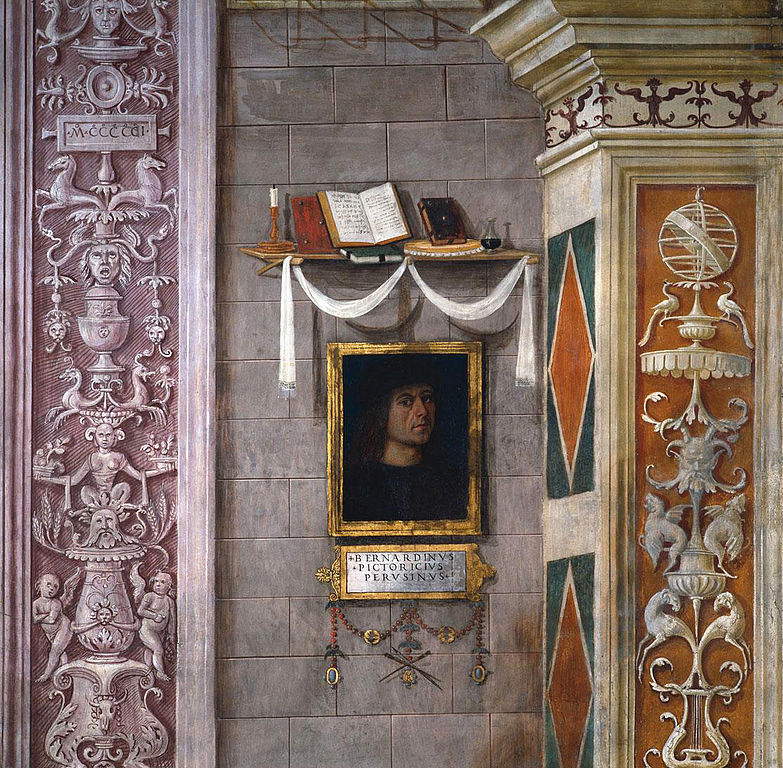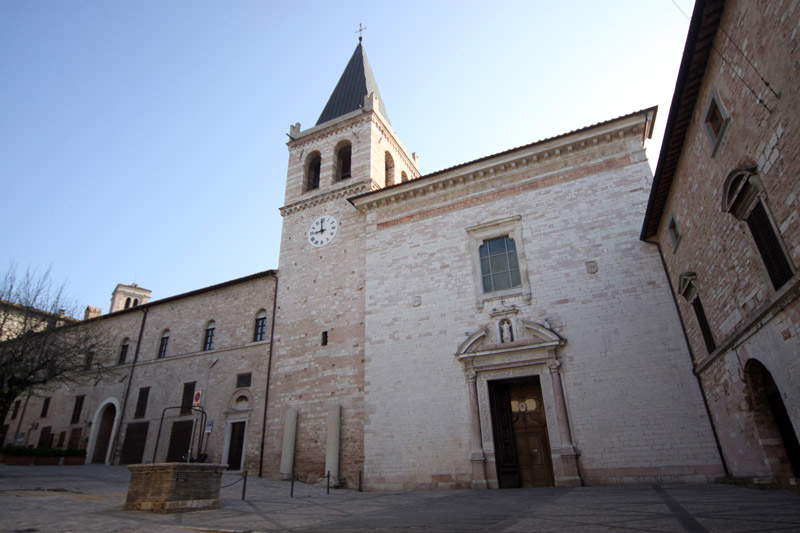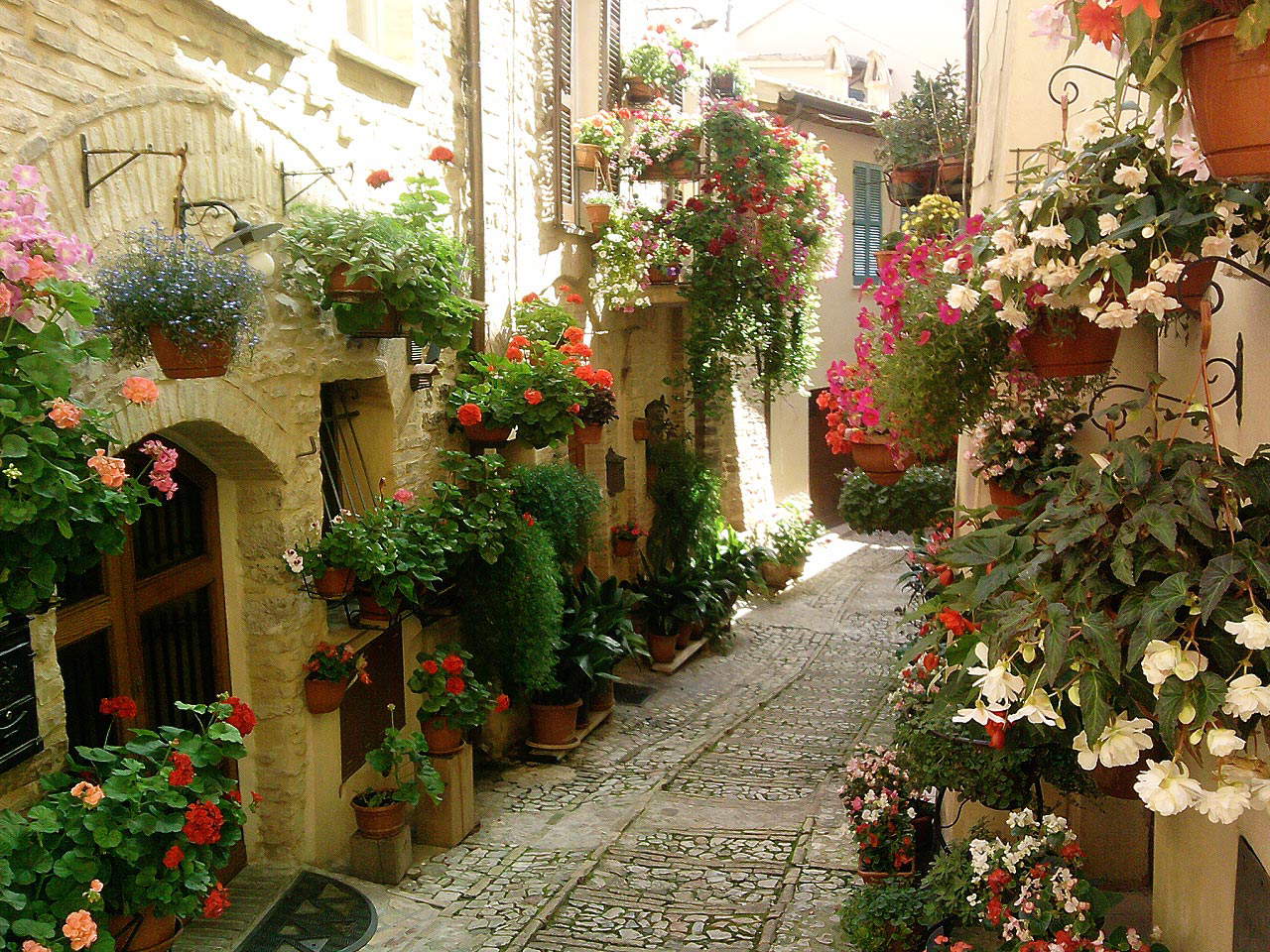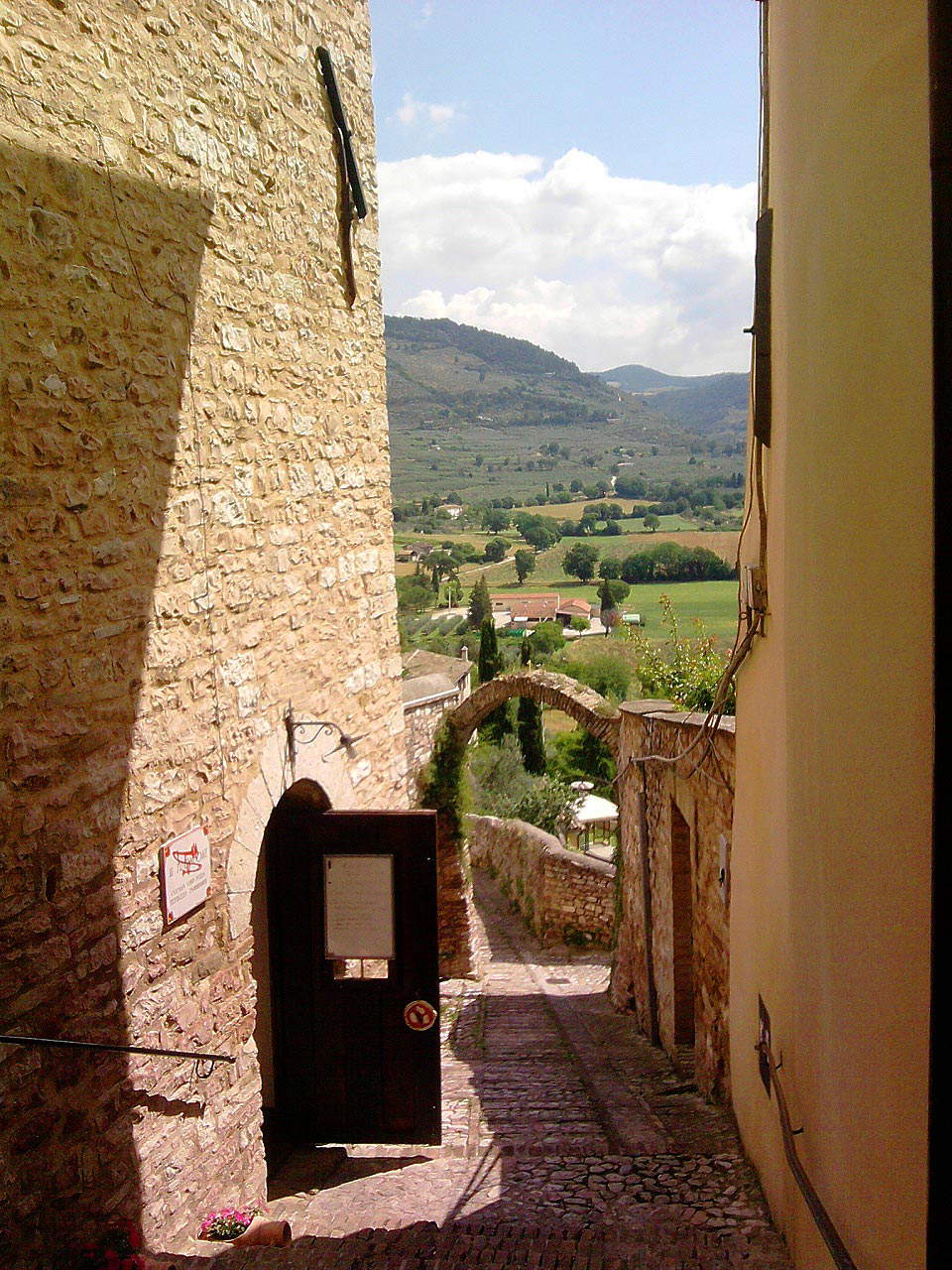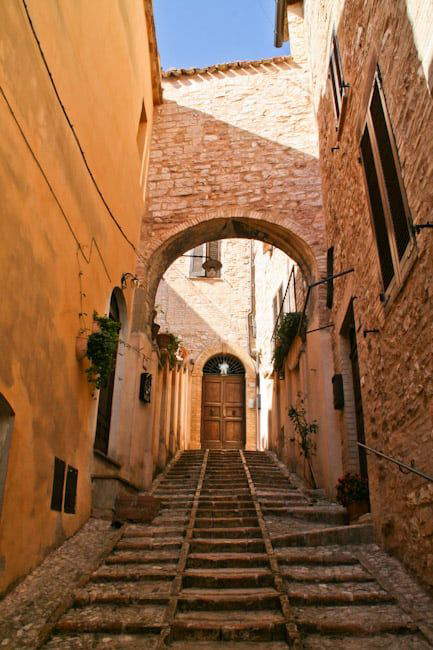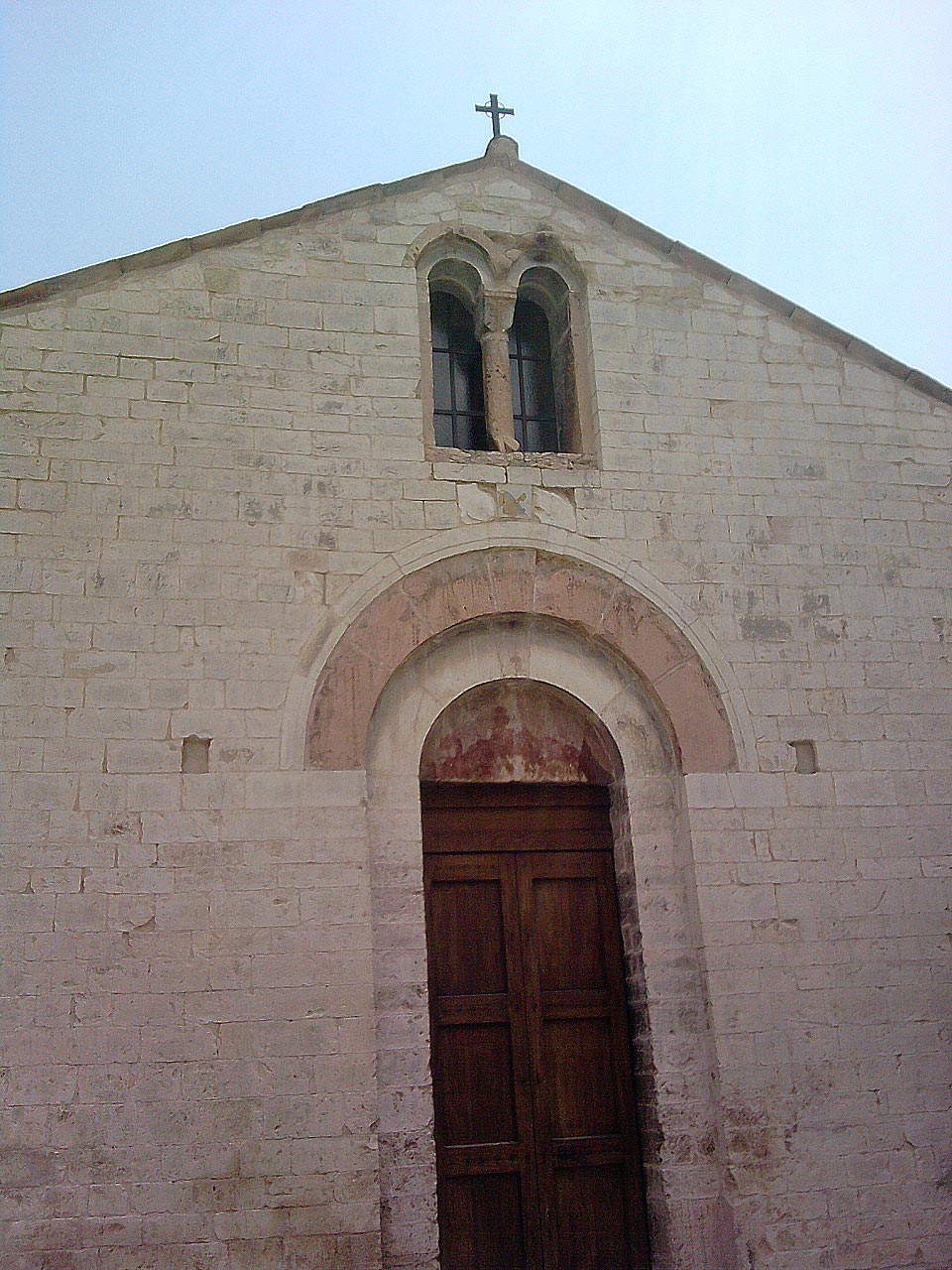by Redazione , published on 18/08/2020
Categories: Travel
/ Disclaimer
A trip to Spello, a village of Roman origin, for a journey through the Middle Ages and Renaissance among masterpieces of art history.
Meadows, trees, skies that “evoke classical idylls and woodland eclogues, in a spring coolness that is melancholic serenity.” This is the image that Cesare Brandi derived from the splendid frescoes that Bernardino di Betto, who has gone down in history and is better known by the name Pinturicchio, painted in Spello, in the Baglioni Chapel. The town, clinging to a hill on the slopes of Subasio, was at that time, that is, in the early 16th century, a fiefdom of the powerful Baglioni family of Perugia, which held the patronage of a chapel in the local collegiate church of Santa Maria Maggiore: a member of the family, prior of the church, whose name was Troilo Baglioni, decided to hire the artist, then 50 years old and among the most renowned painters of his time, to decorate the room. On paper, it was a modest job, in a suburban location, for a painter who had already worked in the largest Roman churches and in the apartments of Pope Alexander VI, but evidently Bernardinus attached great importance to these frescoes, if in Spello he decided to leave his self-portrait, where he signed himself with the nickname he had been given because he had begun working at a very young age: “Bernardinus Pictoricius,” or “Bernardino Pinturicchio.” The artist perhaps wanted to rival his older colleague, his corregionale, Pietro Vannucci, or the Perugino who was Raphael’s master: shortly before, he too had left a self-portrait in the Collegio del Cambio in Perugia.
Artist’s veils in one of Umbria’s most surprising places: neither the sober and bare facade of Santa Maria Maggiore, rebuilt in the 17th century in medieval forms, nor the austere and almost unadorned nave, would suggest the presence of a treasure such as the one that opens on the left as you enter. Three scenes, theAnnunciation, theAdoration and the Dispute with the Doctors, combine to create one of the pinnacles of Pinturicchio’s art, praised by art writers of every age. And Brandi was right: these scenes evoke the colors and sweetness of an Umbrian spring. They find a correspondence in the land, in the flowers that adorn every street in Spello, in the verdure in which the village is immersed. And perhaps Pinturicchio even reproduced it, the town: it could be the one we see perched on a hill behind the Virgin and the archangel Gabriel in the scene of the ’Annunciation.
 |
| The Baglioni Chapel |
 |
| Pinturicchio, the Adoration of the Magi in the Baglioni Chapel in Santa Maria Maggiore |
 |
| Pinturicchio’s self-portrait |
 |
| The Collegiate Church of Santa Maria Maggiore |
 |
| Alley of Spello |
 |
| Alley of Spello with a view of the valley |
In one of his travel notebooks from 1904, Maurice Denis, one of the greatest artists of the transitional moment between Impressionism and Post-Impressionism, spoke of Spello as a rural idyll: “across a beautiful road, in a very cultivated valley, monotonous mulberry trees, and sometimes some beautiful oaks, some beautiful views of the mountains. The consular gate, with Roman portraits: you go up, the view of Assisi in the distance, in the morning light.” Like so many who come to Spello, Denis had also ascended to the village through the Consular Gate, one of the six entrances to ancient Roman Hispellum , one of the most prosperous and splendid cities of Umbria in the time of ancient Rome, when Spello was “splendidissima Colonia Iulia.” this is the title Augustus bestowed on it in gratitude for the support the city gave him in the war of Perugia, which saw him opposed to Lucius Antonius between 41 and 40 B.C.
The Borgo Tower, with its clock and the trees that adorn its top, overshadows the Consular Gate: as you climb, the streets become narrower and narrower, the flowers decorating the thresholds and balconies increase, and the more modern houses give way to ancient brick buildings. The collegiate church of Santa Maria Maggiore remains on the right, adjacent to the Palazzo dei Canonici, an ancient ecclesiastical seat that now instead houses Spello’s Pinacoteca Civica : great artists of the Umbrian school, from Andrea d’Assisi to Niccolò l’Alunno (the latter also the author of the frescoes in the nearby Tega Chapel), crowd its rooms. Another work by Pinturicchio is preserved in a nearby church, Sant’Andrea: the Madonna Enthroned with Saints was painted by the Umbrian artist, with wide concurrence from his highly organized workshop, between 1506 and 1508.
The main street at one point widens and becomes Piazza della Repubblica: it is here the heart of the town, an orderly widening where recent buildings have taken the place of older ones but where the tidy Palazzo Comunale, of medieval origins but remodeled during the Renaissance, under the rule of the Baglioni family, who moreover had their residence here (the Palazzo Baglioni, which was once the Baglioni fortress, then modified over the centuries), still looks elegant.
 |
| The Consular Gate and the Borgo Tower |
 |
| Alley of Spello |
 |
| The church of San Martino |
 |
| The so-called Propertius towers and, in the center, Porta Venere |
 |
| One of the mosaics of the Villa of the Mosaics in Spello |
The oldest Spello is the one that begins just past the Palazzo Comunale: the streets become intricate cobblestone-paved alleys, on which stone buildings jut out, ending towards the via di Torre Belvedere, along which run the remains of the city walls: from here, at the highest point of the city, one dominates the valley below. Skirting the walls, you go back downhill: you leave the thirteenth-century rose-colored facade of the church of San Martino on your left, and then turn right into a narrow alley to return to the street that runs along the walls. From here, through steep uphills to the Venus Gate, the splendid three-arched travertine portal from the Augustan period, flanked by the imperious bulk of two dodecagonal Romanesque towers, known as the “Propertius Towers.” There is no real connection to the great Latin poet: only a desire on the part of the Spellanians to claim Propertius’ birth (who, however, was most likely born instead in nearby rival Assisi).
Yet, Spello would not even need to add unrealistic evidence of its Roman splendor-a thought that becomes clear when one enters the Villa of the Mosaics opened a few years ago (it was 2005 when the complex came to light). One of the most incredible archaeological discoveries in recent times, an imperial villa with twenty rooms, ten of them decorated with sumptuous mosaic floors. Yet another surprise in a village that opens to the traveler as delicate and colorful as the corolla of one of its countless flowers.
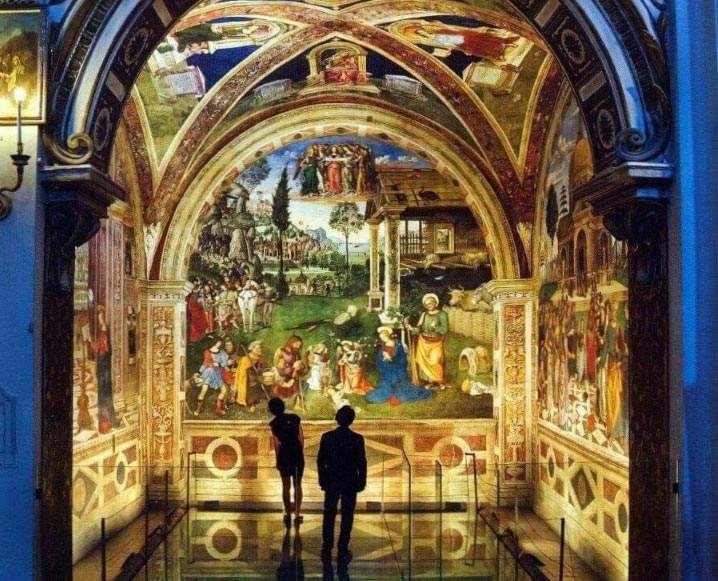 |
| Melancholy serenity: Spello, the Roman, medieval and Renaissance village |
Warning: the translation into English of the original Italian article was created using automatic tools.
We undertake to review all articles, but we do not guarantee the total absence of inaccuracies in the translation due to the program. You can
find the original by clicking on the ITA button. If you find any mistake,please contact us.


